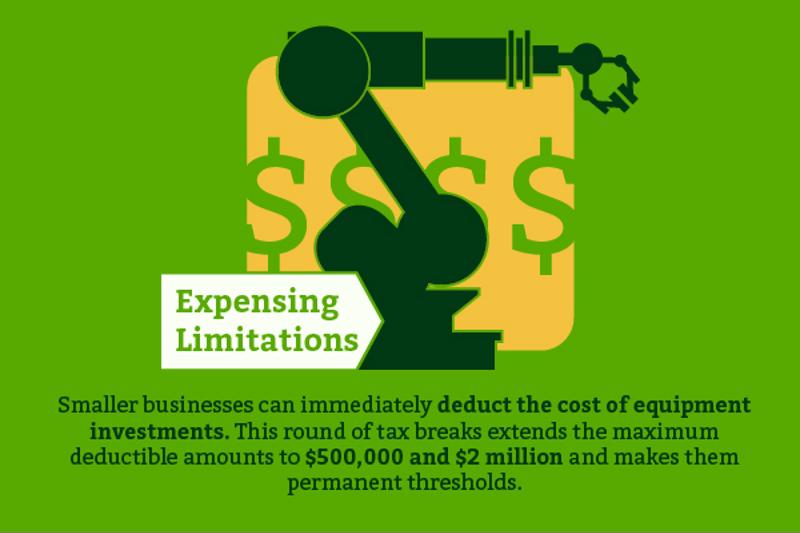Changes are coming to the U.S. tax code that could impact the way manufacturers operate within their supply chains. In late December 2015, the U.S. Congress unveiled new tax provisions that are expected to bring up to $650 billion in tax relief, according to IndustryWeek. A work opportunity tax credit, expensing limitations, and a research and development credit were all on the docket for the end-of-year tax relief agenda.
Taxes should always be on the minds of manufacturers as they create their strategic plans for their business practices. For instance, according to Supply Chain Quarterly, it’s crucial for manufacturers to consider tax codes in other countries before choosing an overseas site for building a plant. In particular, the tax credits supported by Congress can all impact manufacturers in different ways:
- WOTC: Provides incentives to employers who hire from certain groups of protected people.
- Expensing limitations: Smaller businesses can immediately deduct the cost of equipment investments. This round of tax breaks extends the maximum deductible amounts to $500,000 and $2 million and makes them permanent thresholds.
- R&D credit: An income tax credit for the amount by which research expenses exceeded a certain number.
Unpacking the tax code: R&D
Perhaps the most interesting of these changes – and one that manufacturers can immediately make use of – is the tax credit proportioned off for R&D. According to the treasury regulations, qualifying R&D expenses would include those used in an effort to develop new products or processes. In other words, taking steps to be innovative can pay off in the long run for manufacturers.
According to Manufacturing.net, however, this tax credit is underused. Common myths, such as believing that the credit is only available to those companies that invent something completely new, are curtailing its use. This credit can be utilized by businesses in every sector, and aren’t available to just the big enterprises. In the long run, taking advantage of the R&D credit can have a distinctly positive impact on a company’s bottom line.
 These tax code changes will impact small businesses especially.
These tax code changes will impact small businesses especially.How will manufacturers be affected?
Why do these changes in the tax code make a difference when it comes to ensuring a company’s manufacturing practices are as operationally efficient as possible? These modifications are good news for manufacturers and distributors, especially in terms of research and development. It’s going to be critical for companies to invest in the right management solutions so that they can use these tax breaks to their advantage to improve bottom lines.
Being able to manage the manufacturing process and make sure business and innovation incentives align is crucial for enterprises in today’s ever-changing economic climate. To that end, solutions from Inspirage can make a difference. Our Innovation Management Consulting services can help organizations plan their business expenses and manage data analytics so they can continue to operate at maximum capacity down the line. Other products, like Project & Portfolio Management tools, can help companies determine the proper course of action for sourcing and product lifecycle management.
Contact Inspirage today for more information.